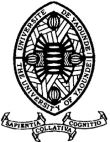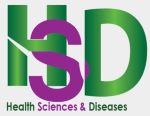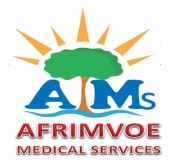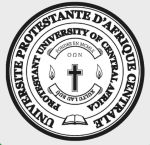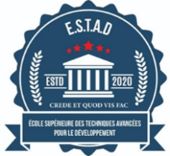Factors Associated with Unmet Blood Transfusion Needs at Kankan Regional Hospital in Guinea
DOI:
https://doi.org/10.5281/hra.v3i2.6414Keywords:
Unmet Need, Blood transfusion, Kankan, GuineaAbstract
Introduction. In sub-Saharan Africa, there is a significant gap between supply and demand for blood transfusion. The aim of this study was to analyse the unmet need for blood transfusion at the Kankan regional hospital in Guinea. Methodology. We conducted a cross-sectional analytical study over a three-month period, from November 2021 to January 2022. Data were collected from blood request forms, and analysis was performed using STATA V15 software. Binary logistic regression was performed with a significance threshold set at 5%, presenting adjusted Odd Ratios (ORa) and 95% confidence intervals (CI). Results. A total of 385 transfusion requests were analysed, 36% of which had an unmet need for blood transfusion. The median age of the patients was 7 years (IQR = 2 - 27 years). Risk factors likely to be associated with unmet need for blood transfusion included : the requesting department, with a higher probability for maternity (OR = 4.89; p-value = 0.036), surgical (OR = 5.56; p-value = 0.023), and medical (OR = 9.58; p-value = 0.004) departments compared with paediatrics; followed by unscheduled blood transfusion (OR = 2.41; p-value = 0.018) and previous transfusion history (OR = 4.08; p-value = 0.002). Conclusion. The frequency of uncovered blood transfusion needs at the Kankan regional hospital remains relatively high. Empowering the transfusion unit could help to meet these needs. However, it is essential to run awareness campaigns in the community and to involve local players, under central supervision, to ensure that the healthcare system functions properly.
References
1. Fukiau GM, Situakibanza H, Mbayo F, Kalumbu DKN, Kulimba DM. Évaluation de l’efficacité de la transfusion sanguine chez l’enfant à Kinshasa: expérience de trois formations médicales. Transfus Clin Biol. 2013;20(3):361.
2. Traoré ND, Théophile BD. Besoins transfusionnels dans le département de pédiatrie du CHU Gabriel Touré du Mali de Mai 2012 a Avril 2013. 2015;
3. Tagny CT, Murphy EL, Lefrère JJ. Le groupe de recherches transfusionnelles d’Afrique francophone: bilan des cinq premières années. Transfus Clin Biol J Soc Francaise Transfus Sang. mars 2014;21(1):37‑42.
4. Kabongo RK, Samba H, Guilavogui P, Kamano F, Barbe S, Shepherd S, Ouattara A, Kojan R. Mise en place d’un système d’approvisionnement basé sur le don bénévole dans un contexte Ébola et post-Ébola à N’Zérékoré en Guinée. Données préliminaires de l’expérience d’Alima-NGO. Transfus Clin Biol. 2016;23(4):285.
5. Birhan MM, Asfaw G. Determinants of blood transfusion for elective surgical procedures at Tikur Anbessa Specialized Hospital, Addis Ababa, Ethiopia, 2017. Transfus Apher Sci. 2019;58(5):628‑31.
6. Mohammed AD, Ntambwe P, Crawford AM. Barriers to Effective Transfusion Practices in Limited-Resource Settings: From Infrastructure to Cultural Beliefs. World J Surg. 2020;44(7):2094‑9.
7. Checkley L, Motwani G, Wange IC, Nwanna-Nzewunwa O, Kirya F, Ajiko MM, Juillard C, Dicker RA. Assessment of Blood Donation and Transfusion in Eastern Uganda: A Mixed-Methods Study. Ann Glob Health [Internet]. [cité 5 juill 2020];85(1). Disponible sur: https://www.ncbi.nlm.nih.gov/pmc/articles/PMC6634316/
8. Kanagasabai U, Chevalier MS, Drammeh B, Mili FD, Qualls ML, Bock N, Benech I, Nelson LJ, Alemnji G, Watts DH, Kimani D, Selenic D. Trends and Gaps in National Blood Transfusion Services - 14 Sub-Saharan African Countries, 2014-2016. MMWR Morb Mortal Wkly Rep. 21 déc 2018;67(50):1392‑6.
9. Nebie K, Sawadogo S, Kafando E, Bationo EM, Dahourou H, Ouattara S, Kienou K, Nana S, Kaba L, Fretz C. Apports du contrôle qualité produits finis dans l’amélioration de la qualité des produits sanguins labiles au Centre régional de transfusion sanguine de Ouagadougou (Burkina Faso), 2014. Transfus Clin Biol. 2017;24(4):431‑9.
10. Traore M, Dumont A, Kaya AB, Traore SO, Traore OM, Dolo A. Approvisionnement et utilisation du sang au Centre de santé de référence de la commune V à Bamako (Mali). Cah Détudes Rech Francoph. 2011;21(1):33‑40.
11. Fisher A, Wallis S, Hassall O, Martin R, Bates I. Collaborations on blood transfusion research in sub‐Saharan Africa: who, what and where. Vox Sang. avr 2020;115(3):221‑32.
12. Tayou Tagny C, Kapamba G, Diarra A, Ngandu C, Deneys V, Sondag-Thull D. La formation en médecine transfusionnelle reste insuffisante dans les centres d’Afrique subsaharienne francophone : résultats d’une étude préliminaire. Transfus Clin Biol. déc 2011;18(5‑6):536‑41.
13. Zalambani A. Impact du vieillissement de la population sur le système de santé: exemple de la demande en produits sanguins labiles. 2012;
14. Nkohkwo A, Agbor G, Asongalem E, Tagny C, Asonganyi T. Whole blood pathogen reduction technology and blood safety in sub-Saharan Africa: A systematic review with regional discussion. Afr J Lab Med. 2016;5(1):1‑9.
15. Wakaria EN, Rombo CO, Oduor M, Kambale SM, Tilock K, Kimani D, Makokha E, Mwamba PM, Mwangi J. Implementing SLMTA in the Kenya national blood transfusion service: lessons learned. Afr J Lab Med. 2017;6(1):1‑7.
16. Sawadogo S, Kafando E, Nébié K, Ouédraogo AS, Ouattara S, Dahourou H, Fretz C, Deneys V. Facteurs associés à la satisfaction des prescripteurs de produits sanguins labiles au Burkina Faso. Transfus Clin Biol. 2017;24(4):440‑8.
17. Hartford E, Muanantatha O, Valigy VI, Salimo S, Ziman A, DeUgarte DA. Transfusion practice and knowledge in Mozambique. Transfusion (Paris). 2015;55(7):1607‑12.
18. van Sambeeck JHJ, de Wit PD, Luken J, Veldhuisen B, van den Hurk K, van Dongen A, Koopman MMW, van Kraaij MGJ, van der Schoot CE, Schonewille H, de Kort WLAM, Janssen MP. A Conceptual Framework for Optimizing Blood Matching Strategies: Balancing Patient Complications Against Total Costs Incurred. Front Med [Internet]. 25 juill 2018 [cité 5 juill 2020];5. Disponible sur: https://www.ncbi.nlm.nih.gov/pmc/articles/PMC6069448/
19. Enquête Démographique et de Santé, République de Guinée 2018.pdf [Internet]. [cité 4 mai 2024]. Disponible sur: https://www.unicef.org/guinea/media/2106/file/EDS%202018.pdf
20. Ministère de la santé de la République de Guinée. Plan National de Développement Sanitaire (PNDS) 2015-2024. [Internet]. 2015. Disponible sur: extwprlegs1.fao.org
21. Kassie A, Azale T, Nigusie A. Intention to donate blood and its predictors among adults of Gondar city: Using theory of planned behavior. PloS One. 2020;15(3):e0228929.
22. Enawgaw B, Yalew A, Shiferaw E. Blood donors’ knowledge and attitude towards blood donation at North Gondar district blood bank, Northwest Ethiopia: a cross-sectional study. BMC Res Notes. 2019;12(1):1‑6.
23. Dhabangi A, Idro R, John CC, Dzik WH, Opoka R, Siu GE, Ayebare F, van Hensbroek MB. Caregivers and community perceptions of blood transfusion for children with severe anaemia in Uganda. Transfus Med. 2019;29(1):61‑7.
24. Annulaire_Institut National de la Statistique, République de Guinée 2019_opt.pdf [Internet]. [cité 4 mai 2024]. Disponible sur: https://www.stat-guinee.org/images/Documents/Publications/INS/annuelles/annuaire/Annuaire_INS_2019_opt.pdf
25. Drammeh B, De A, Bock N, Pathak S, Juma A, Kutaga R, Mahmoud M, Haule D, Sembucha S, Chang K, Nkya E, Kuehnert M, Marfin AA. Estimating Tanzania’s National Met and Unmet Blood Demand From a Survey of a Representative Sample of Hospitals. Transfus Med Rev. janv 2018;32(1):36‑42.
26. Ali SA, Tesfaghiorghis YK, Tesema MT, Achila OO. Met and unmet blood demand, recipients profiles and associated trends in Eritrea. Transfus Med. 2020;30(4):247‑54.
27. Valerian DM, Mauka WI, Kajeguka DC, Mgabo M, Juma A, Baliyima L, Sigalla GN. Prevalence and causes of blood donor deferrals among clients presenting for blood donation in northern Tanzania. PloS One. 2018;13(10):e0206487.
28. Osaro E, Charles AT. The challenges of meeting the blood transfusion requirements in Sub-Saharan Africa: the need for the development of alternatives to allogenic blood. J Blood Med. 2011;2:7.
29. Mecha A, Erchafo B. Blood donation intentions and predictors among Hosanna town dwellers, south nation nationality peoples region, Ethiopia. J Fam Med Prim Care. 2022;11(9):5320‑6.
Downloads
Published
How to Cite
Issue
Section
License
Copyright (c) 2025 Mory 1 Kourouma, Sidikiba Sidibé, Lancinè Dramé, Fanta Kourouma, Sidiki Soumaoro, Elhadj Marouf Diallo, Djiba Diakité, Fassou Mathias Grovogui, Delphin Kolié, Alexandre Delamou

This work is licensed under a Creative Commons Attribution-NonCommercial-NoDerivatives 4.0 International License.
Authors who publish with this journal agree to the following terms:
- Authors retain copyright and grant the journal right of first publication with the work simultaneously licensed under a Creative Commons Attribution License CC BY-NC-ND 4.0 that allows others to share the work with an acknowledgement of the work's authorship and initial publication in this journal.
- Authors are able to enter into separate, additional contractual arrangements for the non-exclusive distribution of the journal's published version of the work (e.g., post it to an institutional repository or publish it in a book), with an acknowledgement of its initial publication in this journal.
- Authors are permitted and encouraged to post their work online (e.g., in institutional repositories or on their website) prior to and during the submission process, as it can lead to productive exchanges, as well as earlier and greater citation of published work

